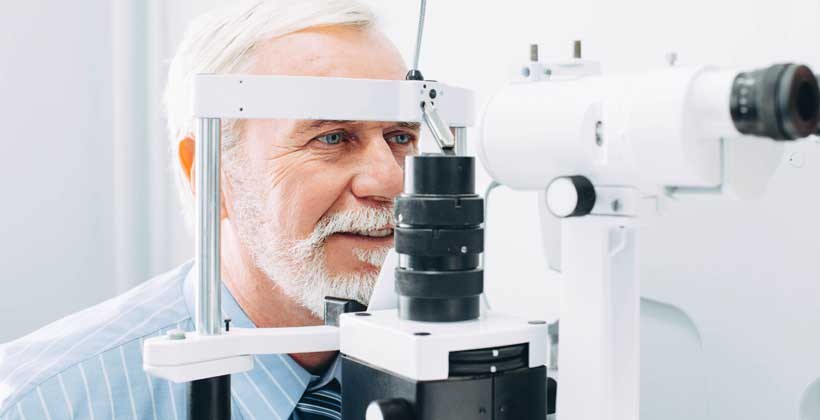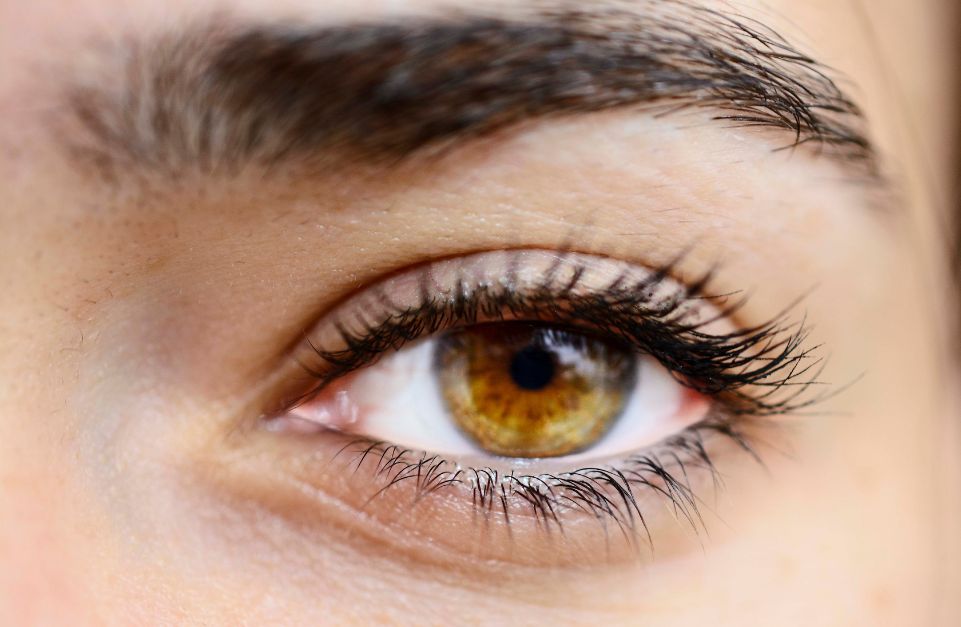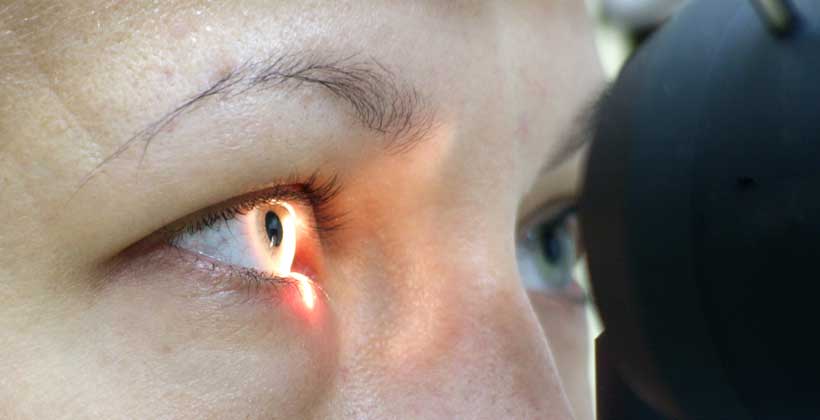LASER TREATMENTS
At Palm Valley Eye we offer a variety of medical related laser treatments.
LASER TREATMENTS
At Palm Valley Eye we offer a variety of medical related laser treatments.

LASER EYE TREATMENTS OFFERED AT PALM VALLEY EYE CARE & SURGEONS
Laser treatments are used to successfully treat many eye conditions. The laser treatments offered at Palm Valley Eye are safe and have minimal post-procedure restrictions.
Michael McAfee
“THEY WERE FRIENDLY, PROFESSIONAL AND EXTREMELY KNOWLEDGEABLE.”
Michael McAfee
“THEY WERE FRIENDLY, PROFESSIONAL AND EXTREMELY KNOWLEDGEABLE.”
YAG LASER CAPSULOTOMY
WHAT IS YAG LASER CAPSULOTOMY?
YAG Laser Capsulotomy is a special laser treatment used to further improve your vision after cataract surgery when a form of scar tissue forms behind the intraocular lens.
During your cataract operation, that natural lens inside your eye that has become cloudy is removed. A new acrylic or silicone lens is put inside the “bag” or natural lens membrane in your eye. Commonly, the back portion of the capsule thickens months to years after surgery due to remaining microcells growing a new membrane. When this happens, your sight becomes blurry and you may develop symptoms of glare or distortion.
During the YAG laser treatment we create a hole in the back of the capsule to remove the opacified portion and restore clear vision.

WHAT IS YAG LASER CAPSULOTOMY?
YAG Laser Capsulotomy is a special laser treatment used to further improve your vision after cataract surgery when a form of scar tissue forms behind the intraocular lens.
During your cataract operation, that natural lens inside your eye that has become cloudy is removed. A new acrylic or silicone lens is put inside the “bag” or natural lens membrane in your eye. Commonly, the back portion of the capsule thickens months to years after surgery due to remaining microcells growing a new membrane.
During the YAG laser treatment we create a hole in the back of the capsule to remove the opacified portion and restore clear vision.
BENEFITS OF YAG LASER CAPSULOTOMY
YAG laser capsulotomy offers the following benefits:
- Quick procedure: This laser eye surgery can be completed in just a few minutes.
- Fast results: Many patients experience a rapid improvement in vision right after the procedure.
- Minimally invasive: YAG laser capsulotomy does not require cutting an opening into the eye, which reduces the risk of infection.
- Preservation of vision: This treatment helps restore vision after cataract surgery, improving quality of life.
BENEFITS OF YAG LASER CAPSULOTOMY
YAG laser capsulotomy offers the following benefits:
- Quick procedure: This laser eye surgery can be completed in just a few minutes.
- Fast results: Many patients experience a rapid improvement in vision right after the procedure.
- Minimally invasive: YAG laser capsulotomy does not require cutting an opening into the eye, which reduces the risk of infection.
- Preservation of vision: This treatment helps restore vision after cataract surgery, improving quality of life.
WHAT EYE SYMPTOMS DOES YAG LASER CAPSULOTOMY TREAT?
YAG laser capsulotomy can assist with the following symptoms:
- Blurry or cloudy vision
- Sensitivity to bright lights
- Glare and halos

WHAT EYE SYMPTOMS DOES YAG LASER CAPSULOTOMY TREAT?
YAG laser capsulotomy can assist with the following symptoms:
- Blurry or cloudy vision
- Sensitivity to bright lights
- Glare and halos
WHAT SHOULD YOU EXPECT AFTER YAG LASER CAPSULOTOMY?
After YAG laser capsulotomy, patients can expect an improvement in vision. Some patients may notice this improvement immediately, while others notice changes after a few hours or days. Immediately after the procedure you will likely have blurry vision and floaters. These symptoms generally diminish quickly, within a few days.
AM I THE RIGHT CANDIDATE FOR YAG LASER CAPSULOTOMY?
You may be a good candidate for YAG laser capsulotomy if you’re experiencing visual issues after a cataract surgery. Our team will carefully assess your condition and medical history before recommending a treatment plan.
FREQUENTLY ASKED QUESTIONS ABOUT YAG LASER CAPSULOTOMY
How long does YAG laser capsulotomy take?
In general, this laser eye surgery takes around 10 to 15 minutes to complete.
Is YAG laser treatment covered by insurance?
Many health insurance plans cover YAG laser treatments if they’re deemed medically necessary. You should consult your insurance provider for details about coverage.
How soon can you drive after YAG laser treatment?
Many patients can drive shortly after the procedure. However, some patients may need to wait until they feel comfortable with their vision.
When does vision improve after YAG laser?
While many patients notice an immediate improvement in vision, some may require up to a few days to see the full effect.
Is YAG laser treatment painful?
A YAG treatment is not painful. If a lens is used during the treatment, you may have mild discomfort or gritty sensation that typically resolves quickly.
FREQUENTLY ASKED QUESTIONS ABOUT YAG LASER CAPSULOTOMY
How long does YAG laser capsulotomy take?
In general, this laser eye surgery takes around 10 to 15 minutes to complete.
Is YAG laser treatment covered by insurance?
Many health insurance plans cover YAG laser treatments if they’re deemed medically necessary. You should consult your insurance provider for details about coverage.
How soon can you drive after YAG laser treatment?
Many patients can drive shortly after the procedure. However, some patients may need to wait until they feel comfortable with their vision.
When does vision improve after YAG laser?
While many patients notice an immediate improvement in vision, some may need to wait a few hours to feel the full effects.
Is YAG laser treatment painful?
YAG laser treatment is generally not painful. However, you may experience mild discomfort or a sensation of pressure.
SCHEDULE AN APPOINTMENT ONLINE
SCHEDULE AN APPOINTMENT ONLINE
YAG LASER IRIDOTOMY
WHAT IS LASER PERIPHERAL IRIDOTOMY?
The “angle” is the space between the clear part of the eye (cornea), and the colored part (iris). It contacts the main structure that directs fluid out of the eye.
In closed angle glaucoma, the angle is closed in many or most areas, causing increased eye pressure, optic nerve damage and possible vision loss. The laser creates a hole in the outer edge of the iris, which widens (opens) the angle and enhances fluid outflow.
While this procedure will not improve your vision, it is intended to prevent severe vision loss and pain due to closed angle glaucoma.

WHAT IS LASER PERIPHERAL IRIDOTOMY?
The “angle” is the space between the clear part of the eye (cornea), and the colored part (iris). It contacts the main structure that directs fluid out of the eye.
While this procedure will not improve your vision, it is intended to preserve vision and prevent glaucoma from progressing.
BENEFITS OF YAG LASER IRIDOTOMY
This laser eye surgery offers the following benefits:
- Quick procedure: The treatment is usually completed in a few minutes.
- Minimally invasive: Laser iridotomy does not make cuts on the outside part of the eye. There are no stitches.
- Long-term eye pressure control: By creating a small hole in the iris tissue, the procedure helps maintain an open angle and the drainage outflow from the eye. This reduces the risk of angle closure glaucoma, which can result in severe pain and blindness.
- Prevention of vision loss: For patients who are at risk of angle-closure glaucoma, laser iridotomy can help prevent permanent vision loss.
BENEFITS OF LASER IRIDOTOMY
This laser eye surgery offers the following benefits:
- Quick procedure: The treatment is usually completed in a few minutes.
- Minimally invasive: Laser iridotomy does not make cuts on the outside part of the eye. There are no stitches.
- Long-term eye pressure control: By creating a small hole in the iris tissue, the procedure helps maintain an open angle and maintain the drainage outflow from the eye. This reduces the risk of angle closure glaucoma, which can result in severe pain and blindness.
- Prevention of vision loss: For patients who are at risk of angle-closure glaucoma, laser iridotomy can help prevent permanent vision loss.
WHO CAN BENEFIT FROM LASER PERIPHERAL IRIDOTOMY?
Laser peripheral iridotomy is performed prophylactically for patients with narrow angles who may be at risk for angle closure glaucoma.
LPI is also performed emergently in cases of active angle closure glaucoma.
These symptoms include:
- Severe eye pain
- Eye redness
- Blurry vision
- Halos and light sensitivity
- Headaches and nausea

WHO CAN BENEFIT FROM LASER PERIPHERAL IRIDOTOMY?
Laser peripheral iridotomy is performed prophylactically for patients with narrow angles who may be at risk for angle closure glaucoma.
LPI is also performed emergently in cases of active angle closure glaucoma.
These symptoms include:
- Severe eye pain
- Eye redness
- Blurry vision
- Halos and light sensitivity
- Headaches and nausea
WHAT SHOULD YOU EXPECT AFTER LASER IRIDOTOMY?
AM I THE RIGHT CANDIDATE FOR LASER PERIPHERAL IRIDOTOMY?
You may be a good candidate for laser peripheral iridotomy if you have anatomically narrow angles or are at risk of developing closed-angle glaucoma. Our experts will carefully assess your eye health and symptoms to determine whether this glaucoma treatment is right for you.
FREQUENTLY ASKED QUESTIONS ABOUT LASER IRIDOTOMY
Can I exercise after laser iridotomy?
It’s best to avoid strenuous exercise for at least a few days after the procedure. Ask your healthcare provider for specific guidance.
Is laser iridotomy covered by insurance?
Many health insurance plans cover laser iridotomy when it’s considered medically necessary. Consult your insurance provider about specific coverage.
Can I drive after laser iridotomy?
It’s recommended to avoid driving immediately after the surgery due to side effects, such as blurry vision or light sensitivity. Most patients can resume driving the next day.
Can I wear contact lenses after laser iridotomy?
To avoid irritating the eye, it’s generally best to avoid wearing contact lenses for a few days. Your healthcare provider may offer specific instructions.
Can laser iridotomy improve vision?
Laser iridotomy does not result in vision changes. It is a procedure used to protect the eye from developing high intraocular pressure.
Does laser iridotomy hurt?
This treatment can cause mild discomfort; however, the procedure is fast and discomfort generally lasts for only a couple of minutes.
FREQUENTLY ASKED QUESTIONS ABOUT LASER IRIDOTOMY
Can I exercise after laser iridotomy?
It’s best to avoid strenuous exercise for at least a few days after the procedure. Ask your healthcare provider for specific guidance.
Is laser iridotomy covered by insurance?
Many health insurance plans cover laser iridotomy when it’s considered medically necessary. Consult your insurance provider about specific coverage.
Can I drive after laser iridotomy?
It’s recommended to avoid driving immediately after the surgery due to side effects, such as blurry vision or light sensitivity. Most patients can resume driving the next day.
Can I wear contact lenses after laser iridotomy?
To avoid irritating the eye, it’s generally best to avoid wearing contact lenses for a few days. Your healthcare provider may offer specific instructions.
Can laser iridotomy improve vision?
While laser iridotomy helps control intraocular pressure, it does not directly improve current vision. However, it can stabilize your vision and prevent further vision loss.
Does laser iridotomy hurt?
This treatment can cause mild discomfort; however, the procedure is fast and discomfort generally lasts for only a couple of minutes.
SELECTIVE LASER TRABECULOSPLASTY (SLT)
WHAT IS SELECTIVE LASER TRABECULOSPLASTY?
Selective laser trabeculosplasty (SLT) is a form of laser treatment used to lower intraocular pressure in patients with certain types of glaucoma. It may be used as an initial glaucoma treatment or as an adjunctive treatment with eye drops.
BENEFITS OF SELECTIVE LASER TRABECULOSPLASTY
Selective laser trabeculosplasty offers the following benefits:
- Minimally invasive: This laser eye treatment requires no incisions or cutting.
- Reduced eye pressure: The treatment targets the trabecular meshwork, improving outflow to reduce intraocular pressure by a couple of points. Many patients experience the benefits for up to 2-3 years after treatment.
- Minimal side effects: Compared to more invasive glaucoma treatments, SLT offers fewer side effects. Most patients only experience mild irritation or discomfort that resolves quickly.
- Reduced dependence on medication: Many patients can reduce the need for additional medications with SLT treatment.
- Repeatable: SLT can be repeated for additional treatments to prolong the benefit of IOP reduction.
How SLT works?
Laser energy is applied to the drainage tissue in the angle of the eye. This starts a chemical and biological change in the tissue that results in better drainage of fluids out of the eye, and a lowering of the pressure in a large number of patients. It generally takes 6-8 weeks for the full effect of the laser to occur.
SLT lowers the intraocular pressure by 2-3 points in responsive patients. You should not make changes to your regular glaucoma drops unless instructed to specifically by your doctor. SLT may last for several years and can also be performed more than once.
Why is it called Selective Laser Trabeculosplasty?
The type of laser used is only taken up by select pigmented tissue in the eye. Sometimes it’s referred to as a “cold laser.” Because of this, the laser is only absorbed by the targeted tissue, and produces less scar tissue. The procedure is not painful.
What are the risks of SLT?
The risks are minimal. Mild post-operative inflammation may occur and is treated with eye drops or oral non-steroidal anti-inflammatory medication.
WHAT SHOULD YOU EXPECT AFTER SELECTIVE LASER TRABECULOSPLASTY?
After the procedure, patients may experience mild discomfort or eye redness that resolves within a few days. Most patients can resume their normal activities the same day; however, it’s usually best to avoid strenuous exercise for a short time.
AM I THE RIGHT CANDIDATE FOR SELECTIVE LASER TRABECULOSPLASTY?
You may be a good candidate for SLT if you have elevated eye pressure due to glaucoma. However, not all forms of glaucoma can be treated with SLT. Our team will carefully consider your eye health and medical needs before recommending a treatment plan.
FREQUENTLY ASKED QUESTIONS ABOUT SELECTIVE LASER TRABECULOSPLASTY
Can Selective Laser Trabeculoplasty cause blurriness in the eye?
Yes, mild blurriness is a common side effect of SLT. However, it typically resolves within a few hours to a day.
Does SLT improve eyesight?
SLT does not directly improve eyesight, nor does it restore vision lost due to glaucoma. Rather, it lowers intraocular pressure to help manage glaucoma and prevent further vision loss.
Can I drive after SLT?
It’s recommended to avoid driving immediately after SLT due to potential side effects, such as blurriness and light sensitivity. Most patients can resume driving the next day.
How long does SLT take?
In general, this laser procedure takes about 10-15 minutes to complete.
Is SLT painful?
SLT is not painful. A lens is used during the procedure that may cause mild discomfort or gritty sensation, which resolves quickly.
How long does SLT last?
SLT can provide effective intraocular pressure lowering for a few months up to several years.
FREQUENTLY ASKED QUESTIONS ABOUT SELECTIVE LASER TRABECULOSPLASTY
Can Selective Laser Trabeculoplasty cause blurriness in the eye?
Yes, mild blurriness is a common side effect of SLT. However, it typically resolves within a few hours to a day.
Does SLT surgery improve eyesight?
SLT does not directly improve eyesight, nor does it restore vision lost due to glaucoma. Rather, it lowers intraocular pressure to help manage glaucoma and prevent further vision loss.
Can I drive after SLT surgery?
It’s recommended to avoid driving immediately after SLT due to potential side effects, such as blurriness and light sensitivity. Most patients can resume driving the next day.
How long does SLT surgery take?
In general, this laser eye surgery takes about 10-15 minutes to complete.
Is SLT surgery painful?
SLT is typically not painful. Patients may feel mild discomfort or pressure during the procedure, as well as some side effects afterwards.
How long does SLT surgery last?
The effects of this glaucoma treatment can last anywhere from a few months to several years. If eye pressure rises, patients may need to undergo treatment again.
Improve Your Vision at Palm Valley Eye Care & Surgeons.
Request an appointment to see how we can help or call us to learn more.
